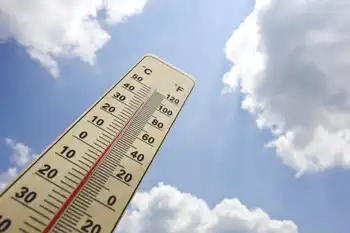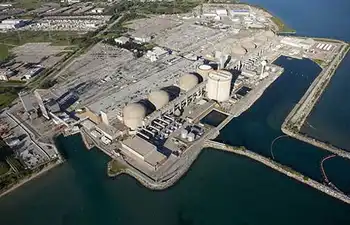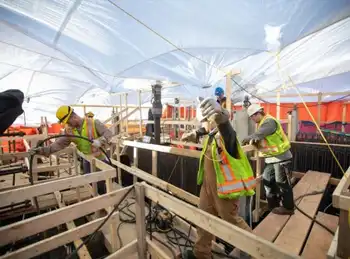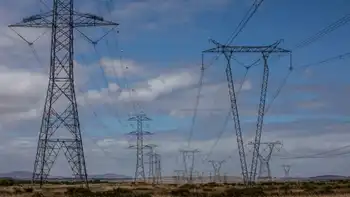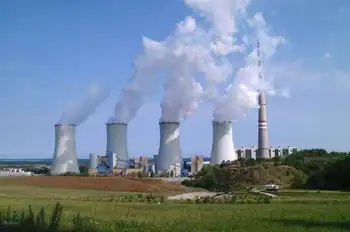FPL, Everglades ordered to find compromise
By Palm Beach Post
CSA Z462 Arc Flash Training - Electrical Safety Essentials
Our customized live online or in‑person group training can be delivered to your staff at your location.

- Live Online
- 6 hours Instructor-led
- Group Training Available
Some day has come. FPL has filed for state permits to run three high-voltage power lines along the 7.4-mile strip.
But the surrounding land has long since been absorbed by an expansion of Everglades National Park, a federally protected wilderness where towers topping 140 feet and lines buzzing with 500 kilovolts are officially frowned upon.
Under orders from Congress, park managers are now evaluating a compromise: a land swap with FPL that would push the power corridor, now three miles west of Krome Avenue in the footprint of a critical park restoration project, to the park's eastern boundary.
For FPL, securing a western corridor for power lines is crucial, not only to handle projected population growth in Miami-Dade but also to move additional juice from the utility's planned expansion of its Turkey Point nuclear power plant. The company, already battling concerns from residents and politicians from Cutler Bay to Coconut Grove over a second proposed 230-kilovolt route up a long swath of U.S. 1, supports the swap.
"For FPL, it provides the necessary land, albeit smaller and closer to developed areas, in which to expand its electrical facilities to meet its obligation to provide reliable electric service to its customers in South Florida,'' said FPL spokesman Mayco Villafaña in an e-mail.
For the park, the existing corridor would complicate and potentially hinder a critical part of the massive Everglades restoration effort — bridging Tamiami Trail to flow more water down the Northeast Shark River Slough, the park's historic and long-parched headwaters.
"As long as those lands are there, there is a problem in terms of moving water to the south,'' said Dan Kimball, superintendent of Everglades National Park.
The land, only as wide as a football field, amounts to just 320 acres in the 1.5 million-acre park. But FPL would have to fill in wetlands to build bases to anchor the towers and an access road for maintainence. Towers and power lines stretching more than seven miles wouldn't exactly add to the vista, either.
Some environmentalists argue the massive transmissions lines don't belong in or along the border of a national park.
Sara Fain, Everglades program manager for the National Parks Conservation Association, said cutting a deal with the utility would set a bad precedent for handling disputes over private holdings in national parks.
"There isn't one solution, swap the land or not,'' she said. "There is another solution. Buy the land.''
One potential alternative the park is considering is to acquire the land, by buying or condemning it, said Brien Culhane, the park's chief of planning and environmental compliance for the National Park Service.
But either option could be expensive and require time-consuming legal wrangling. FPL had discussed a land purchase for more than a decade, Kimball said. "We couldn't agree on the terms of acquisition.''
FPL, which contends it must add power lines to improve the electrical grid and get power to growing areas, is seeking four new routes in Miami-Dade between 2012 and 2016. It has already filed permit requests for both Glades routes with the Florida Department of Environmental Protection.
Villafaña said the trade would benefit the park and utility, adding 60 acres to the park and removing a restoration concern. In exchange for its 320-acre strip, FPL would take over a 230-acre strip with a 90-foot easement along L31-North canal, making for easier worker access.
If the park accepts the swap, it would clear the way for easy state approval for FPL. A decision, Culhane said, is expected by January. If it rejects it, the utility could be facing another difficult fight to run lines closer to suburbia in western Dade - perhaps along Krome Avenue.
The land swap was added to a massive spending bill Congress approved in March and was supported by both Florida senators, Democrat Bill Nelson and Republican Mel Martinez.
But the clause, which passed through no committee reviews, explicitly left the final call to Secretary of the Interior Ken Salazar, who oversees federal land.
It also conflicts with the congressional language supporting the park's 1989 expansion, which explicitly called power lines an incompatible use.
This time, said the park's Culhane, "Congress authorized but did not mandate that we do an exchange. It's not a directive.''





